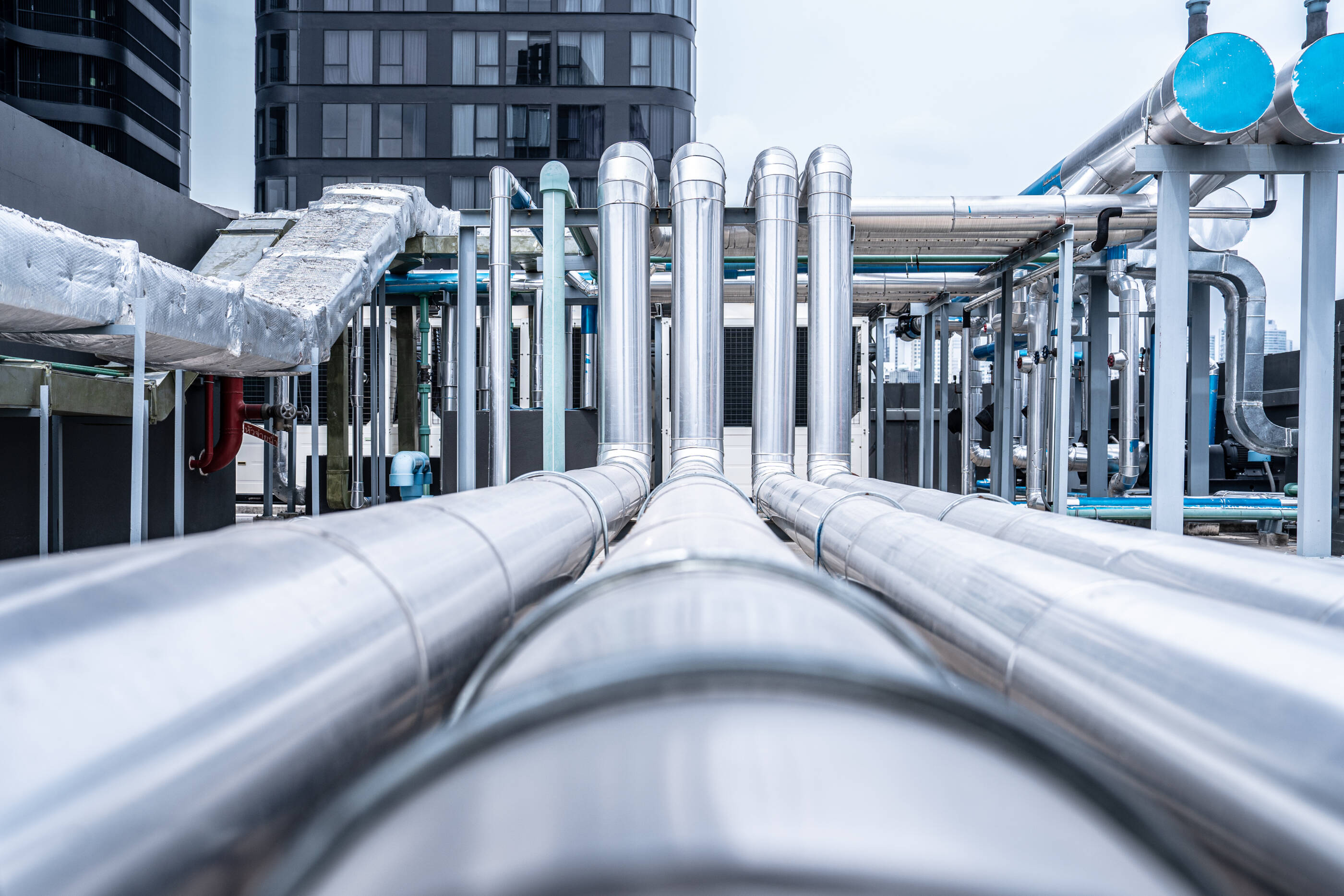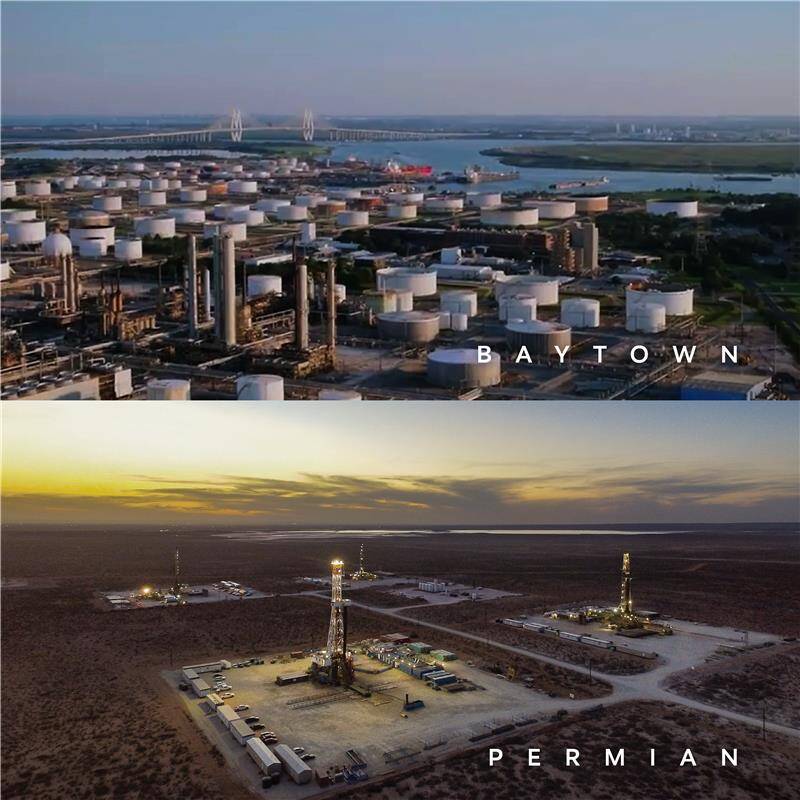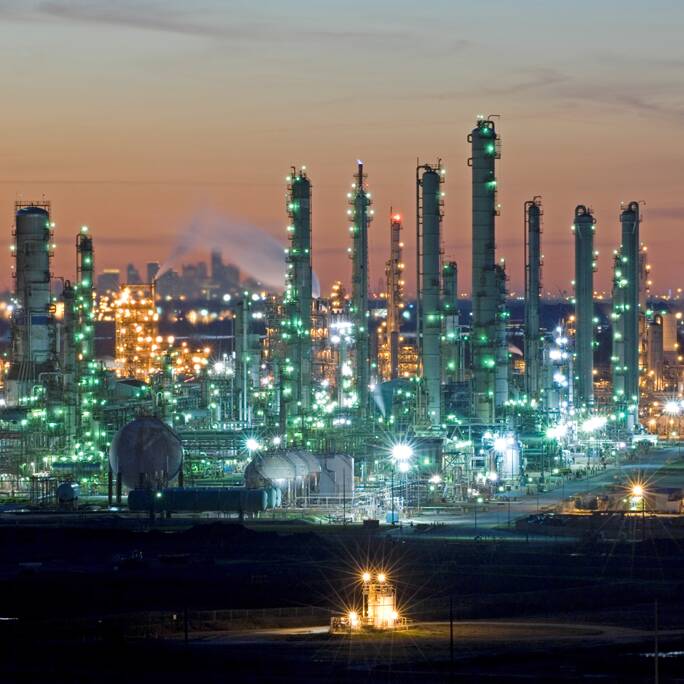ExxonMobil™ Low Carbon Ammonia
Discover how ExxonMobil™ Low Carbon Ammonia can lead your industry to its lower-emission goals:
Manufacturing
Power generation
Transportation
Manufacturing
Power generation
Transportation
Increasing capabilities to decrease emissions
In Baytown, Texas, we're testing out the technologies to derisk our customers' projects. Today we are collaborating with third parties to help develop this solution, working with companies like SK Inc. Materials of Korea to advance our planned ammonia project in Baytown.
When completed, our Baytown facility is expected to be the world's largest producer of low-carbon hydrogen and will provide customers with ammonia offtake options.1
With demand expected to increase between two- and three-times today’s levels by 2050, according to various IEA development scenarios, the Baytown low-carbon intensity ammonia project, where CO2 associated with production of such ammonia is captured and sequestered, is well positioned to allow ExxonMobil to reliably and safely produce sufficient supplies to the market.
Watch this video to learn more about our low-carbon hydrogen and ammonia facility in Baytown.
The ExxonMobil difference
Integration
Scale
Commercial viability
Let’s talk about how we can help your organization advance in the energy transition.
Let's deliver
Real world progress
We’re a leader in the energy transition now, and at scale. With over 140 years of innovation behind us, we’re paving the path for progress with scaling infrastructure and end-to-end low carbon solutions. We’re accelerating the world’s path to decarbonization.
The proof is in our progress.
Explore more
For more information about how Low Carbon Solutions is making real world progress, explore more.
Marubeni and ExxonMobil’s low-carbon ammonia deal marks major step in unleashing new energy supply
FOOTNOTES:
- Final investment decision (FID) for the Baytown low carbon hydrogen and ammonia facility. FID is contingent on supportive government policy and necessary regulatory permits.
- CO2 associated with production of ExxonMobil™ Low Carbon Hydrogen at Baytown is ~98% captured and sequestered. The carbon intensity of the ExxonMobil™ Low Carbon Ammonia will vary depending on factors such as transportation.
- Ammonia Co-firing with Coal: A Review of the Status and Prospects, Energy & Fuels.
- Ammonia Technology Roadmap, IEA report.
- Ammonia Market to Triple by 2050, S&P report.
- Global Ammonia Demand, Wood Mackenzie report.
- Harnessing Hydrogen: A Key Element of the U.S. Energy Future, National Petroleum Council. Hard-to-abate sectors include heavy industry, transportation, and power generation.
- Verify fuel compatibility with your vehicle owner's manual or by contacting your vehicle manufacturer.
- ExxonMobil Permian net zero natural gas” means natural gas expected to be produced with net zero Scope 1 and 2 GHG emissions from ExxonMobil operated unconventional facilities in the Permian Basin and used at ExxonMobil’s facilities in the U.S. Gulf Coast. Content reflects opportunities as of May 14, 2025. May not reflect all potential opportunities or final investment decisions made by the company. Individual opportunities may advance based on a number of factors, including availability of supportive policy, technology for cost-effective abatement, and alignment with our partners and other stakeholders. Project viability and returns may vary. The company may refer to these opportunities as projects in this presentation or external disclosures at various stages throughout their progression.






